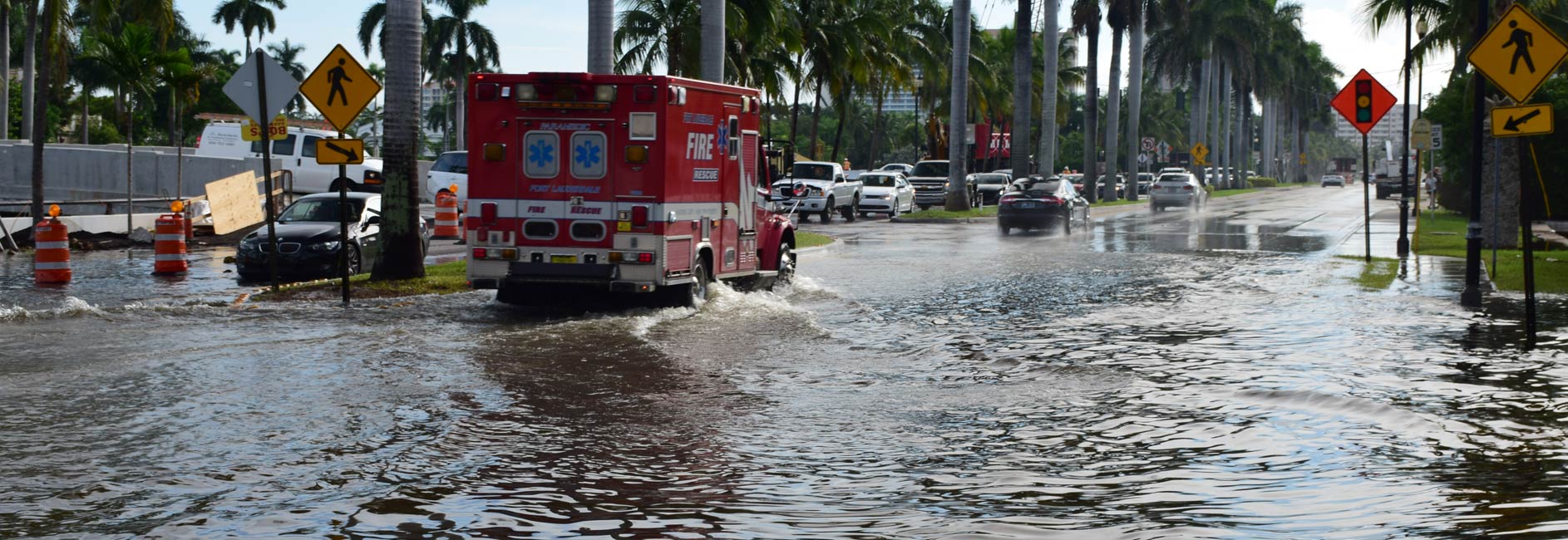

A new study headed by the Rosenstiel School shows that sea-level rise is contributing to more frequent flood events.
A new University of Miami Rosenstiel School of Marine and Atmospheric Science-led study found that Miami Beach flood events have significantly increased over the last decade due to an acceleration of sea-level rise in South Florida.
The researchers suggest that regional sea-level projections should be used in place of global projections to better prepare for future flood hazards in the region.
To quantify the flood hazard in Miami Beach, the Rosenstiel School researchers analyzed tide and rain-gauge records, media reports, insurance claims, and photos of flooding events on Miami Beach and in Miami since 2006. The insurance claims and media reports helped the researchers pinpoint the date and type of flood events.
“Our results show that the effect of sea-level rise is real and affecting the daily life of people living in low-lying coastal communities, such as Miami Beach,” said Shimon Wdowinski, Rosenstiel School research professor of marine geosciences, and lead author of the study.
The results showed that the flooding frequency in Miami Beach has significantly increased after 2006 mainly due to an increasing number of high-tide flooding events. The increased flooding frequency coincides with acceleration in the rate of sea-level rise in South Florida. The average rate of sea-level rise increased by 6 millimeters per year over the last decade—from 3 millimeters per year before 2006 to 9 millimeters per year after 2006.
The study also provides new evidence that connects the weakening of the Gulf Stream with sea-level rise along the U.S. Atlantic coast.
Florida is one of the most vulnerable areas to sea-level rise due to its low elevation, large population concentrations, and economic importance. Accelerated rates of sea-level rise have caused a significant increase in flooding frequency in several coastal communities in Florida.
The study, titled “Increasing flooding hazard in coastal communities due to rising sea level: Case study of Miami Beach, Florida,” was published in the June 2016 issue, Vol. 126 of the journal Ocean and Coastal Management. The study’s authors include: Shimon Wdowinski, Ronald Bray and Ben P. Kirtman from the Rosenstiel School; and Zhaohua Wu from Florida State University. The study was supported by a grant from NASA.
- Rosenstiel School
About the Photo
A photo by Shimon Wdowinski, a research professor at the Rosenstiel School, shows flooding in Fort Lauderdale, Florida. Miami Beach and other coastal communities also sustain street flooding during high tides or rain events.
Join the Conversation
Follow on Twitter:
Rosenstiel School, @UMiamiRSMAS
University
of Miami, @univmiami
UM
News, @univmiaminews